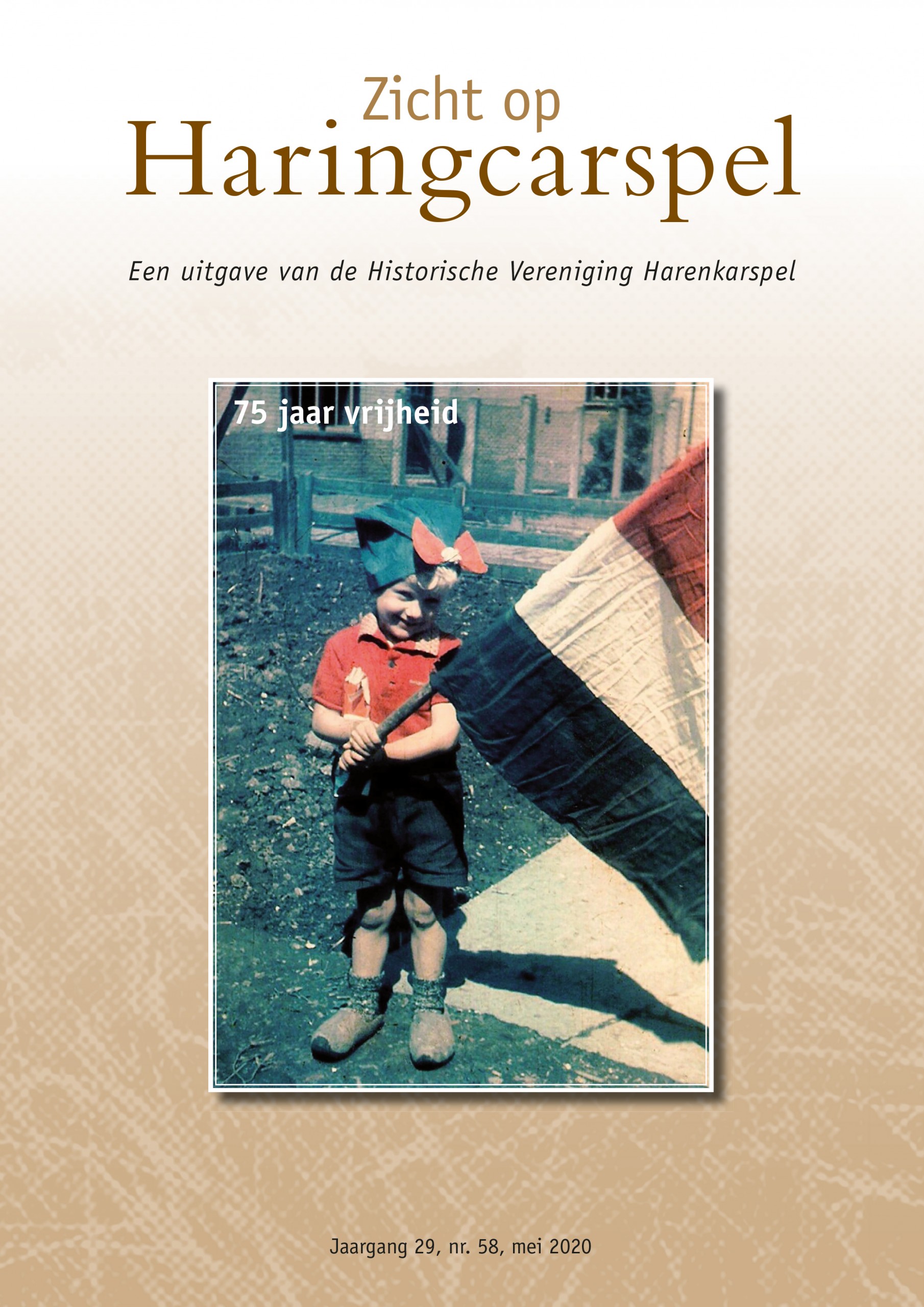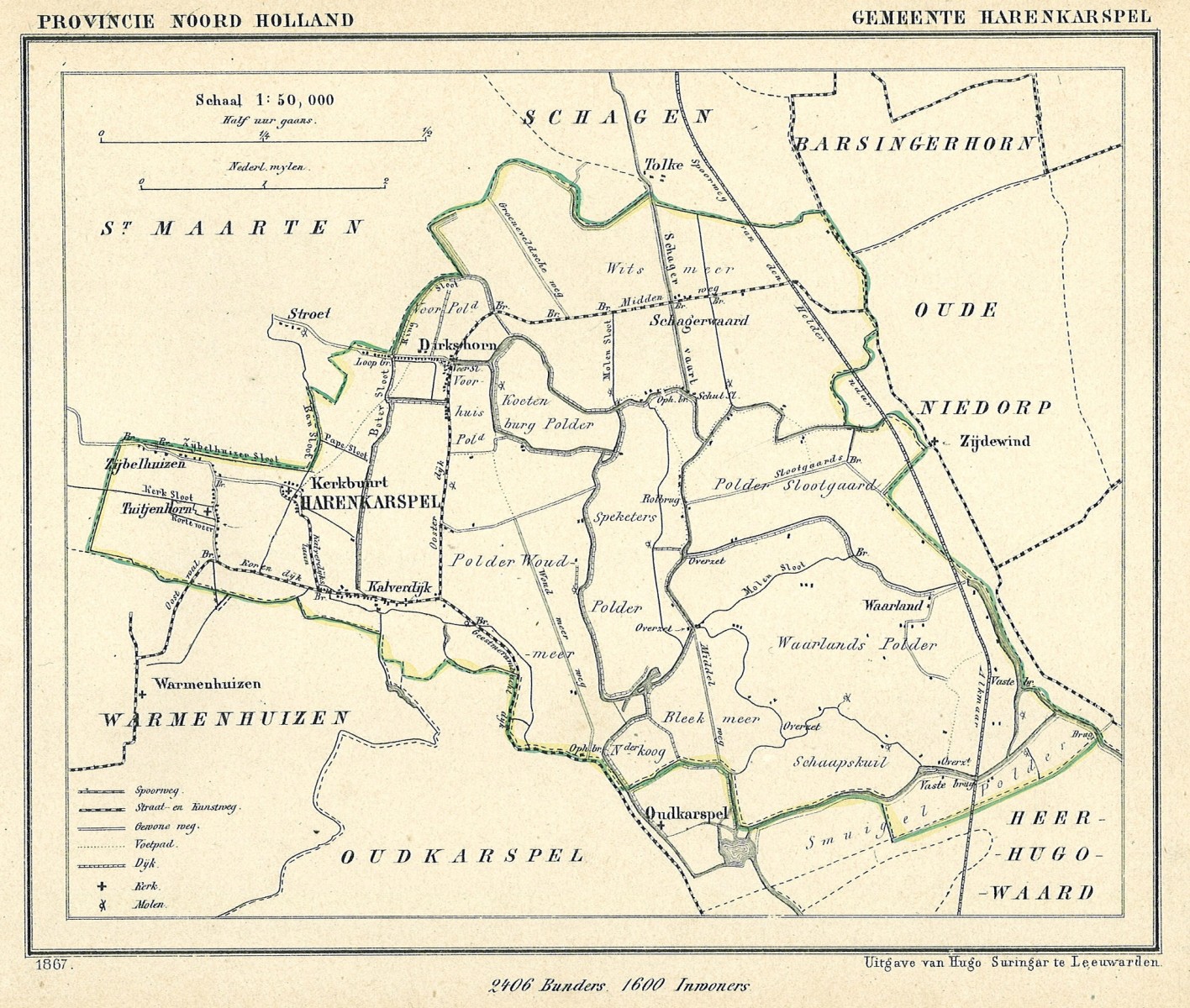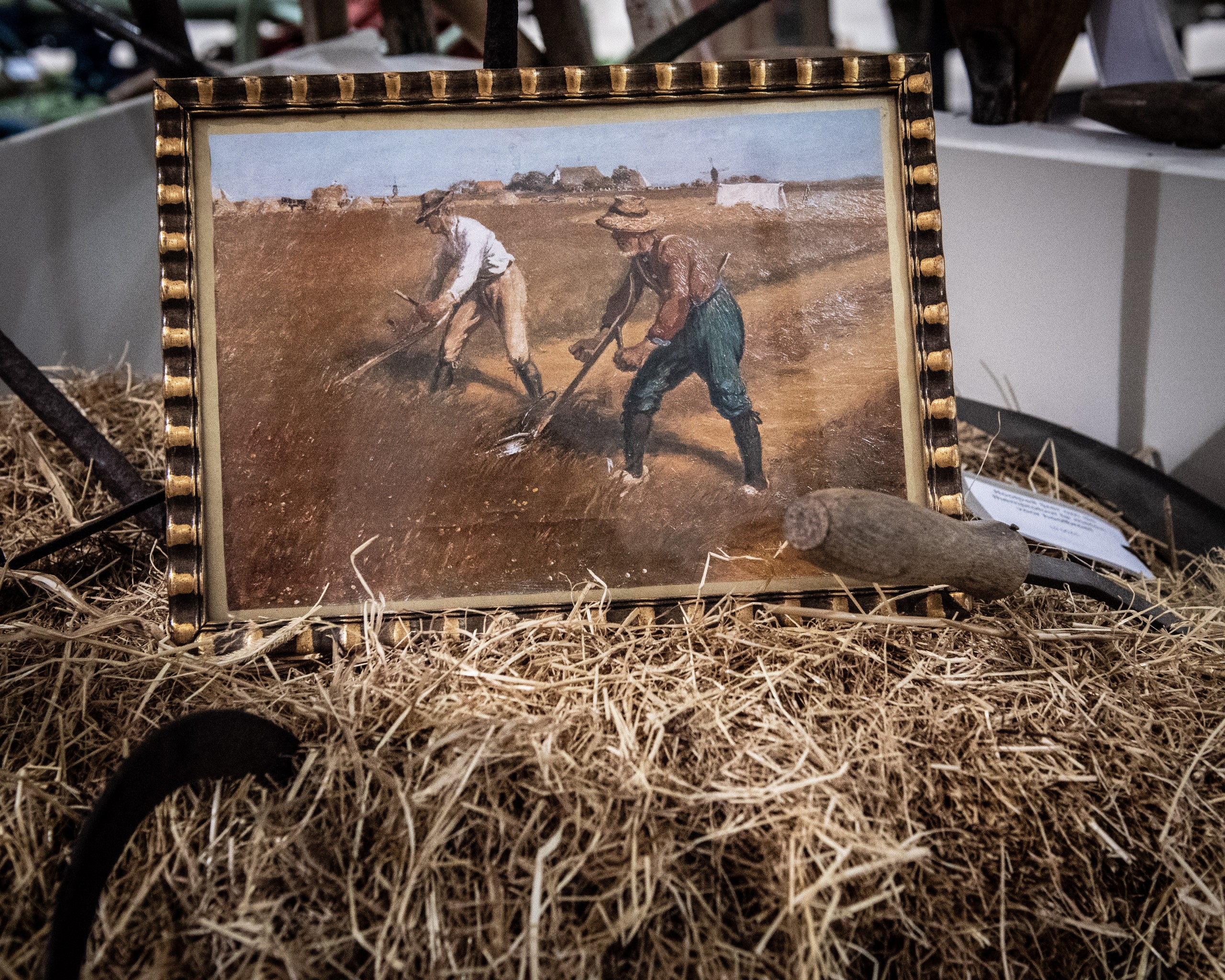View on Haringcarspel
Issue 58, May 2020
This double issue (52 pages) is completely dedicated to the period 1940-1945.
With stories about the war from residents of Harenkarspel and memories of children from Amsterdam who had been evacuated to Harenkarspel during this time. Furthermore, there is a selection of the war- and policearchives of Harenkarspel and Warmehuizen about various topics.
Issues of past years can be accessed via the website of the Regional Archive of Alkmaar, www.regionaalarchiefalkmaar.nl. Search for ‘Zicht op Haringcarspel’.
Do you want to become a member?
A membership costs only 10 euros per year. Do you want to join? Send an e-mail to hisverhar.ledenadm@live.nl and state your full name, address and phone number.

History of Harenkarspel
The former municipality of Harenkarspel was comprised of the villages Tuitjenhorn, Dirkshorn, Eenigenburg, Krabbendam, Sint Maarten, Valkkoog, Waarland and Warmenhuizen and a few hamlets, such as Groenveld, Kalverdijk, Kerkbuurt, ‘t Rijpje, Slootgaard, Stroet and Schoorldam.
It is a very old region with a rich history. Hence, numerous (national) monuments can also be found there, such as cheese-cover farmhouses, mills, residential houses, churches, town halls, bridges, locks and the West-Frisian omringdijk. In 2013 Harenkarspel was annexed by the municipality of Schagen.
Map from 1867 with the municipal boundaries of Harenkarspel. From: J. Kuyper, Gemeente-atlas van Nederland, 4th volume, northern Holland, 1867. Warmenhuizen and Sint Maarten are still denoted as separate municipalities on this map but were annexed by Harenkarspel in 1990.

The name Harenkarspel
Until the 20th century, Harenkarspel was also a town name. Haren is a variation of Hering, which means ‘free area’ in old dutch. Around 1295, a mound was raised to the east of Tuitjenhorn. The land on which the mound was situated was owned by the counts of Holland who gave it to the abbey of Egmond. The abbey loaned it to the lords of Egmond who declared the area free to live in (hence, a ‘hering’).
On this mound, a church was built, as well. The Old-Dutch name for a congregation or parish is ‘kerspel’ and ‘karspel’ is a variation thereof.
In part because of that, this place was named Heringcarspel which later became Harenkarspel and even later gave the municipality its name.
The church was demolished in 1923 and the site was rechristened to Kerkbuurt.





